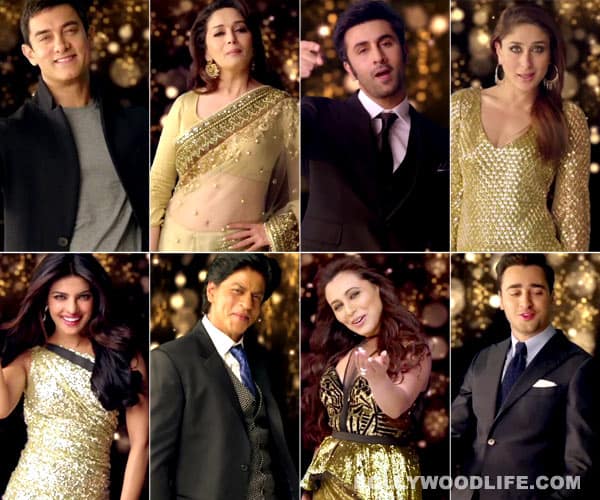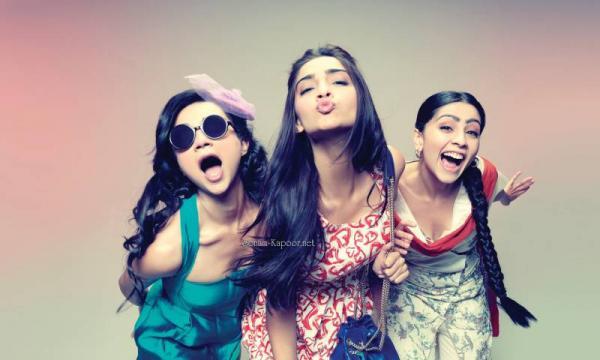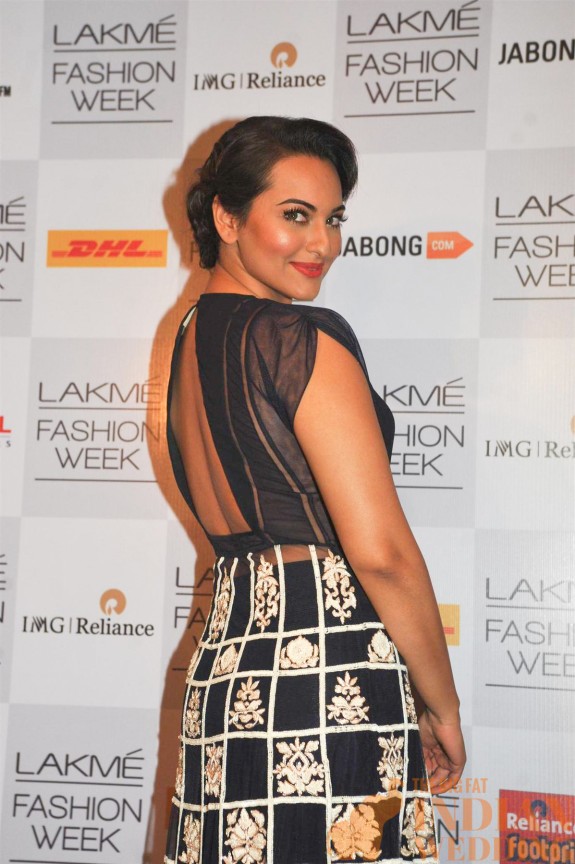Since the birth of silent films in Indian cinema in 1913, “Bollywood” has been evolving and growing to capture the hearts of audiences worldwide. The elaborate costumes, song and dance numbers, and gorgeously depicted heroes and heroines all contribute to the allure that Indian cinema has had through the ages.

{via curryculture.co.uk}
For this weeks {Social Justice Sundays}, we’ll explore the development of the modern-day Bollywood heroine: who was designed to serve as the object of affection in the oldest, black-and-white silent films, and grew into the multi-faceted dancer, showstopper, and protagonist today.
During the 1920s and 1930s, Bollywood as a term wasn’t yet coined, and most films were based on mythology – such as The Mahabharata. Heroines were depicted by well-off, artistically educated women, such as Devika Rani. An average woman would never dream of becoming an actress, because the profession of “entertainment’ was looked upon poorly by the lower castes of India. They had yet to see it as an art and believed it to be equivalent to the line of prostitution.
The 1940s brought in a New Wave of Bollywood, as studios such as The Bombay Talkies grew and expanded into the first public Indian film studio. Bombay Talkies was founded in 1934 and has made 102 films – all of which are credited to the increasing professionalism and technology in Indian cinema at the time. Movies began to focus on the lower caste by creating socially relevant story lines – such as those involving reformist politics, and of course: love stories.

A film based on the studio was released in 2013 and featured all of Bollywood’s best-known
{via bollywoodlife.com}
Actresses such as Madhubala played a variety a roles from a spoiled heiress in Mr. and Mrs. ’55 (1955) to a court dancer who falls in love with an Emperor in Mughal-e-Azam (1960). She starred alongside Bollywood’s best and greatest throughout the 1950s: including Raj Kapoor’s future Kapoor dynasty.
The trend of a heroine playing a diverse set of roles continued, as only the best and most talented actresses could join Bollywood’s ranks and become a star. The 1960s brought even more genres and fusions of comedy, drama, and action. Actresses such as Nutan, Babita (mother of Karisma and Kareena Kapoor), and Mumtaz flaunted their beauty and talents on the silver screen.
Hema Malini was one of the first to break the mold of Bollywood’s heroines being generally one-sided damsels in distress who supported the hero. She played a widow in Andaaz (1971) and continued taking pivotal roles that revealed the inherent flaws in human beings, instead of being the perfect item girl. Nevertheless, her talents still dubbed her the “Dream Girl” of Bollywood in the 1970s.
{via bollywoodmoviefashion.blogspot.com}
The 1970s allowed the sexualization of Bollywood actresses to be glorified – a trend that was too taboo to manifest back in earlier decades. Rekha, for example, morphed into a sex symbol with her cleavage-showing, sultry dance moves and performances. However, her ability to impress audiences with her acting skills wasn’t overlooked – she played a rape victim in Ghar (1978) that focused exclusively on a woman’s recovery from a traumatic incident. It’s noted, however, that she did still have a husband in this movie and the concept of a single woman dominating Bollywood still wasn’t accepted.
In the 1980s, actresses like Madhuri Dixit and Sridevi expressed their trained dancing skills in hit movies such as Tezaab (1988) and Himmatwala (1983). While they played strong women, they were still ultimately love interests – and in their real lives, both actresses took a hiatus while raising their young children.
The 1990s Bollywood had adapted well with the times, in the sense that actresses such as Karisma Kapoor, Kajol, Aishwarya Rai, and Rani Mukherji dressed in Western clothes and often fell in love with their leading men in exotic locations abroad. Costume design allowed heroines to better express themselves, and the variety of genres allowed these women to stand out as brilliant actresses regardless of the lead actor they were working with.

{via taazastat.com}
In the 2000s and 2010s, we see Bollywood changing from its early days of hero chasing heroine into more modern love stories where the heroine maybe meets another guy, gets focused on her career, and has other interests besides marriage. Preity Zinta, Kareena Kapoor, Priyanka Chopra, Katrina Kaif, Deepika Padukone – the list of actresses who have stood out in this new era is truly endless. Today’s Bollywood allows more heroines to participate, since more movies are being made and different roles are written (sometimes with more than one leading actress).

{via santabanta.com}
Throughout the ages, Bollywood’s heroine has always represented the “ideal woman” to the majority of Indian men. In the 1930s and 40s, this was the perfect housewife who supported her husband or the doe-eyed lover who meets the man of her dreams. Bollywood initially target men as their audience, since they were the sole breadwinners in the family and decided when their families would go see films.
Modern-day Bollywood still attempts to depict heroines as the “ideal woman” – she’s beautiful, smart, funny, and perfect. But the idea of a perfect Indian woman has changed – now she’s not a housewife. She can be a reporter, student, or any career woman who falls in love with a man who understands her. Today’s heroine is a warrior who has a stronger, more defined personality – reflective of the growing importance of women in India’s contemporary society.
{via Manish Malhotra at Lakme Fashion Week 2014}
This projection of Bollywood heroines is definitely promising, since it is adapting to a modern mindset. However, the engrained concept of love/romance in Bollywood prevents full advancement like Hollywood has. Women in Bollywood movies will generally always need a man, because Bollywood movies are mostly still love stories. While the genres include comedy, drama, and everything in between, there is still always a romance as a central theme in Bollywood movies even today.
The necessity of a strong love plot in Bollywood movies is mostly reflective of audience needs (item numbers speak for themselves!) Unlike American audiences, Indian viewers want to see romance in every film. They crave the sexy songs and dances and the elaborate choreography between a hero and heroine. This not only differentiates Bollywood as the unique and internationally booming industry that it is, but it also holds Bollywood back from achieving the diversity and female empowerment that Hollywood has comparatively achieved.
For example, Hollywood films and American TV doesn’t always require romance. It’s genres are also vast, but unlike Bollywood, the thrillers and dramas don’t always include a hero and heroine. In fact, Hollywood has perfected the art of falling in love with anything but another human being. We see shows like Breaking Bad where a man is in love with his illegal profession and movies like The Wolf of Wall Street where the love of the money dictates behavior. Hollywood is truly diverse in depicting storylines, but Bollywood has only one genre: romance, with a range of genres within.

{via ibnlive.in.com}
Of course, Bollywood does have movies that are unrelated to love and therefore feature different storylines where women can indeed steal the spotlight without being someone’s perfect other half. However, these tend to be historical pieces or biopics – not fictions that relate to the common man. Black (2005) featured Rani Mukherji as a strong female lead, as did Kahaani (2012) with Vidya Balan. Yet most historical films, like most of India’s history, still feature men (and their love interests): Once Upon a Time in Mumbaai (2010), a love story between a man and his self-image serves as an example.
On a side note, I was happy to see the gorgeous model Nargis Fakhri take on a serious, non-romantic role in Madras Cafe (2013) alongside John Abraham. While this movie is still a historical thriller, it suggests a future where women play just that: women, not love interests.
Bollywood has a long way to go, partly because of its audience expectations: they want love stories and dance sequences. Audiences still crave romance, and directors and producers are wise to act upon these needs. As women grow into a career-oriented, independent society, these expectations and ideals may change. There may be a day in the near future where Bollywood heroines don’t need to play the “ideal woman” – they can play the flawed, yet admirable average woman who may not be looking for love, but is a showstopper in her own way.

{via pinkporcupine.blogspot.com}
Bollywood is taking a step in the right direction, as we trace the importance of the heroine through the ages, but it’s best to view its concepts of idealistic women with a grain of salt. We can’t all expect to be stunningly beautiful like Katrina Kaif and Deepika Padukone, but we can sure try to be the most glamorous versions of ourselves!

